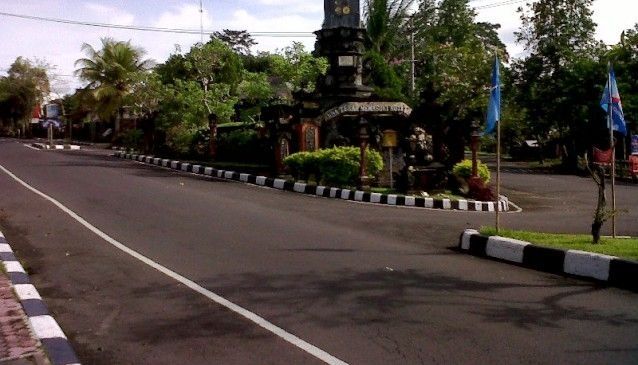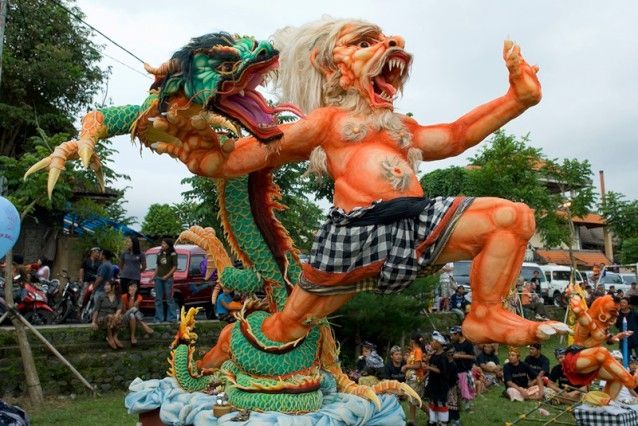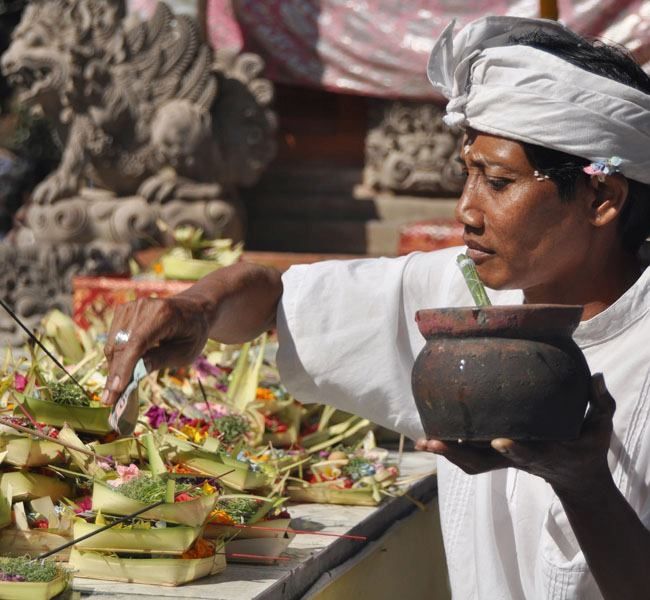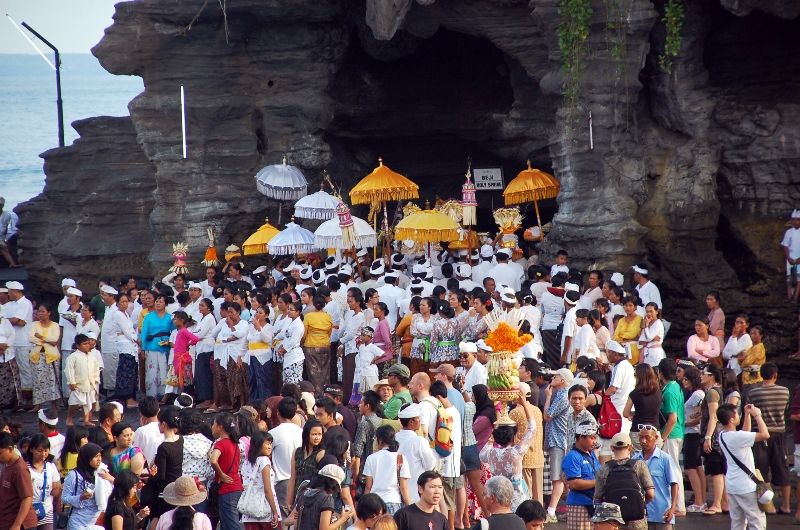Nyepi Day 2016 - Day of Silence

If you planned on landing in Bali between Wednesday 9th and Thursday 10th March this year, you will need to change the date. Bali Ngurah Rai Airport will be closed from 6 a.m. on the 9th until 6 a.m. on 10th. All of Bali effectively shuts down for the entire 24 hours known as Nyepi Day. No ferry boats arrive or leave Bali either. Nyepi is the Hindu Day of Silence or the Hindu New Year, and is calculated according to the Çaka lunar calendar (this year is 1938). Nyepi occurs at the time of the new moon in the months of March or April each year.
For weeks before Nyepi, you will see banners and billboards going up, with phrases such as "Menucapkan: Selamat Hari Raya Nyepi dan Tahun Baru Çaka 1938" “Notice: Welcome the Feast Day Nyepi. New Year’s Eve Çaka 1938”. Similar notices appear at Christmas saying “Selamat Hari Raya Natal”. In Bali, everybody shares in each other’s feasts. As they leave for home, wish your Balinese friends or staff “Selamat Hari Raya Nyepi”. They will really appreciate it.
The time is spent in silent meditation or performing prayers at the house shrine, or merajan. It is a day of introspection in order to achieve spiritual purification. Streets are deserted with only a few pecalang or community security officers ensuring that Nyepi is properly respected. Only emergency services and hospitals are allowed to operate.
Tourists and visitors who happen to be in Bali on Nyepi day must remain inside their hotel complexes or villas, where activities can take place as normal - but must keep off the beaches and amusement areas, as well as roads.
However, this does not preclude you from arriving a few days earlier and taking advantage of several offers of “be at home with us” at hotels and villas across the island. Some expats decide to get out of Bali altogether and take a trip to Java, Lombok or the Gili islands which are incredibly busy during Nyepi. Others decide to go with the flow and use the day to relax and do some introspection of their own lives.

Ogoh Ogoh monster
On “New Year's Eve”, known as Tawur Kesanga or Pengerupuk, homes and banjars or villages are cleaned, and enough food for two days is prepared. Major offerings are made to the demons at village crossroads, where evil spirits are believed to loiter, in order to lure them out. Papier mâché effigies in the form of ugly monsters with bulging eyes (known as ogoh-ogoh) are carried through the streets in torch-lit parades. These demons represent the mythical giant Bhuta Kala, symbolising evil.
At the main crossroads, offerings are placed on the ground to entice the demons and evil spirits. Once the demons have been “lured”, the priests recite curses to force them to leave the village. Everybody joins in by beating pots and tin cans, blowing vehicle horns and making plenty of noise to scare them away. After the ogoh-ogoh have been paraded around the village, a ritual called Ngrupuk takes place, which involves burning the ogoh-ogoh. In coastal towns and villages, this happens on the beaches and great crowds of local people and holiday makers line the streets to watch the spectacle passing by, accompanied by plenty of noise and excitement as the platform bearers run circles in the streets.
On the following day, Nyepi, streets are silent and empty. This is believed to make the departing spirits think Bali is deserted, with nobody left to pester - so they leave. Visitors are expected to be tolerant and abide by the rules. TV’s and music should be kept low and curtains drawn or you will receive a visit from a uniformed “pecalang” with a weapon called a “kris” in his belt.
The Balinese form of Hinduism differs from the religion as practiced in India. The faith brought to Bali from the Majapahit Kingdom of East Java in the 14th century did not replace the strong religious beliefs and rich cultural life of the Balinese. Hinduism was blended with indigenous traditions and beliefs such as animism and ancestor worship, to form a new and unique faith. To the Balinese, their religion is an important part of daily life and the people perform daily offerings to the gods and actively participate in the numerous temple festivals and rituals. Balinese Hindus also make offerings and perform temple rituals to placate demons they believe to personify the destructive forces of nature.

Bali man makes offerings
The rituals for Nyepi actually begin two days beforehand, with the Melasti ceremony. Hundreds of people from each village carry temple objects to beaches or streams for purification. The people wear bright traditional clothing and join in colourful processions starting early in the morning. The women carry tall offerings of fruit, cooked rice and natural foods on their heads, while some men walked along holding a long sheet of yellow and white cloth symbolising the Bridge to God. The busy ceremonies continue until evening, intended as spiritual purification of the whole village.
The day after Nyepi is called Ngembak Geni. After successfully completing their day of restraint and purification, the Ngembak Agni-Labuh Brata ritual takes place: people go out visiting family and friends to ask forgiveness for past mistakes and hurts. The Hindu Balinese, wherever they may be living, always try to celebrate Nyepi - but it is only on the island of Bali that one can sense the special nature of this unique holiday. Imagine an island with almost 4,000,000 people and 2,000,000 motor bikes totally silent. Somehow the normally talkative and noisy Balinese manage it once a year.
Be aware that the day after Nyepi is usually very slow, with most businesses still closed. The majority of Balinese will not be working on the day after Nyepi so don’t expect a lot of action or the usual services until the second day.
Don’t be afraid to just “Slow down and chill out” – you aren’t going anywhere, anyway, for another 24 hours so even if you aren’t a Hindu, you shouldn’t feel rushed to do anything on Nyepi. Take things slow and enjoy the day for what it is. There is no other day like it anywhere in the world.

Colourful Bali ceremony